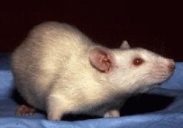 The rat is a valuable animal model of human disease. Humans and rats share many common genetic features and by examining the physiology, neurology, neurophysiology and the resulting behaviours such as the response to stress, of a rat, scientists can gain valuable insights into how humans function. The rat is one of the primary models for studies of human reproduction.
The rat is a valuable animal model of human disease. Humans and rats share many common genetic features and by examining the physiology, neurology, neurophysiology and the resulting behaviours such as the response to stress, of a rat, scientists can gain valuable insights into how humans function. The rat is one of the primary models for studies of human reproduction.
Which is why the findings of a new peer reviewed study on the effects of a drug induced medical abortion on rats is so fascinating. And since 71% of women having an abortion in England and Wales have a medical rather than surgical abortion (over 140,000 women per year), research on the effects is needed.
In a medical abortion, two drugs are administered, mifepristone then misoprostol, up to 48 hours apart. The effects of medical abortions are debated, especially the mental health consequences, but some of the known physical complications are detailed in this briefing.
In the rat experiment the same drug protocols were followed as with humans, but with the major advantage in that rats, unlike humans, can be randomly assigned to different groups. So out of 81 rats there was a control (non-pregnant) group, a pregnant group and a group that was administered mifepristone and misoprostol at the equivalent of 28–40 days gestation for humans.
The researchers measured rat body weight, food intake, vaginal impedance, sucrose consumption and home-cage activity.
The results were striking.
The rats with a full-term pregnancy increased their weight throughout as expected. The rats that experienced a natural miscarriage stopped increasing weight but did not lose weight, their weight stabilised. But the rats given the medical abortion lost significant weight. They simply stopped eating as much and their sucrose consumption dropped dramatically. The ‘miscarriage rats’ and pregnant rats ate normally throughout. Weight is a useful indication of health, well-being and stress in rats and a drop in sucrose consumption and weight suggests depression-like behaviour. In this research, the ‘abortion rats’ demonstrated moderate to severe stress.
Activity levels also measure depression-like behaviour. This showed that the average distance, speed and time moved per week was far less for the ‘abortion rats’, even compared to the ‘miscarriage rats’, which moved as much as the full pregnancy ones. When measuring ‘rearings’ (standing on hind legs – an indication of normal interest in their environment), the medical abortion group displayed a significant decrease relative to all the other groups.
The time spent in cage corners was also measured and showed that the ‘abortion rats’ separated themselves from the others and spent far more time than the other rats in the far back corner of the cage, indicating increased anxiety.
Additionally the ‘abortion rats’ did not show healthy rat behaviour. They did not groom themselves , they had unkempt coats, their posture was more hunched, and they showed a reduction in exploratory behaviour (sniffing and rearing).
The researchers concluded that the rats who had had a medically induced abortion showed moderate to severe stress, as indicated by their physiological effects measured. The observed effects of stress were specific to the induced abortion not the loss of a pregnancy through miscarriage.
The authors also note that the effects of the drug induced termination were not short-term. The effects on food intake lasted for seven days which is the equivalent of 244 human days. The biochemical observations were still visible at the end of the experiment which equates to around six and a half human years.
‘Our findings strongly suggest that pregnancy termination at mid-term (first-trimester human equivalent) induces significant negative biological and behavioural changes in the rat. Additionally, such a procedure appears to be associated with a potential absence of beneficial effects of carrying a pregnancy to full-term. Moreover, our findings also appear to indicate a significant difference between induced pregnancy termination (medical abortion) and natural miscarriage.’
The researchers say that this is the first research that investigates the biological and behavioural effects of drug-induced abortion in an animal model. It seems that the focus of other research has been primarily directed at the success (effectiveness and speed) of terminating a pregnancy. Which leaves me questioning what rigorous pre-clinical therapeutic investigation has taken place with the administration of these powerful drugs on women.
Obviously, as this research was done on rats and not women, the results cannot be directly extrapolated across. But as I state at the outset, knowledge from rat models has benefitted many disorders and contributed significantly to the progress of medicine, so it cannot be easily dismissed. It was also a controlled, objective and ethical assessment – no one can argue that rats suffered these consequences because they were reflecting on what they had done, or were being made to feel guilty by society for having an abortion.
These findings at the very least emphasise the need for further objective research into the physical and behavioural effects of drug induced abortion. Particularly since 86.1% of abortions in Scotland and 71% of abortions in England and Wales are performed using these drugs – over 150,000 women per year. I wonder how many of these women have any idea of the potential physical and emotional consequences to their long-term health?
The research paper: Biological, Behavioral and Physiological Consequences of Drug-Induced Pregnancy Termination at First-Trimester Human Equivalent in an Animal Model is a peer reviewed research article published in Frontiers In Neuroscience by Sammut et al.



